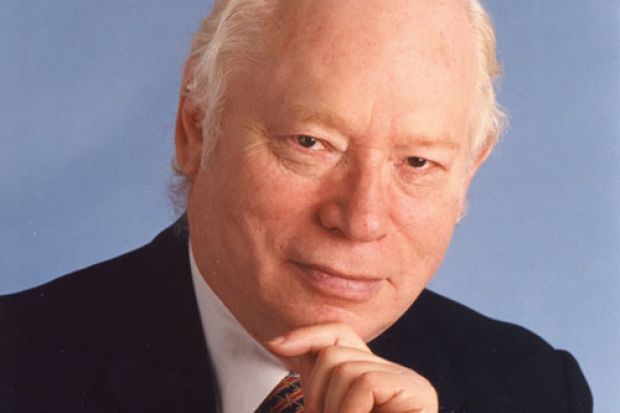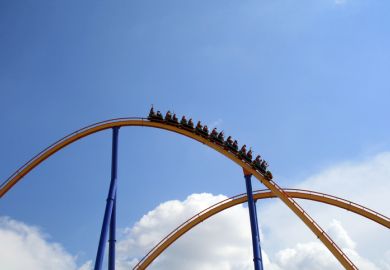It seems we are born experimentalists. Watch toddlers as they drop an object – a spoon, a toy – from a high chair again and again and yet again. Their dogged persistence suggests that they are testing the nature of the world. Whether they are assessing if gravity applies under all conditions or simply the limits of their parents’ patience must remain an open question, but we seem to have a deep-seated desire to understand how the world works. This has driven our need to explain why things are the way they are, and this ambition has developed to become that thing we now call science.
In To Explain the World, Nobel laureate Steven Weinberg describes this voyage of discovery and our efforts to pin down how and why things work the way they do. It begins, as so many histories of science do, with the earliest philosophical musings for which we have written records. After summarising Greek scholarly thought, Weinberg briefly outlines the work of early Arabic scientists and returns to Western Europe to outline the tension between science and religion in the Middle Ages, before describing the abrupt acceleration that marks the scientific revolution of the 16th and 17th centuries. It pretty much stops there with Isaac Newton – an unlikeable character, but undeniably a clever one.
Why, in looking at a tree or a rock, would one speculate that they are assembled from a set of four common elements – or indeed of atoms?
The book’s subtitle, The Discovery of Modern Science, points to the premise that early science was not really science at all. Weinberg defines modern science as “seeking mathematically formulated and experimentally validated impersonal principles that explain a wide variety of phenomena”. This is as good a definition of theoretical physics as any I can think of, and it is perhaps not surprising that the author, a theoretical physicist, equates the discovery or invention of “modern science” with the emergence of this discipline. The book is unabashedly partisan, and with a wink both biology and chemistry are pooled to represent a “unified view of nature based on physics”. He makes a case for this distinct form of modern science developing with Newton, for example with his discovery that the motion of a freely falling body is mathematically related to the motion of a ball rolling down a slope. Newton couldn’t directly measure the acceleration due to gravity with the tools available at the time, but he could and did recognise that the rolling ball represented both an equivalent and experimentally tractable system. This, for Weinberg, was the great leap forward: that we were no longer confined to merely observing and musing on natural phenomena but, given the appropriate mathematical underpinnings, able to interfere, get our hands dirty and wrestle the world into doing our bidding.
For Weinberg, mathematics is king, all else being philosophy, or perhaps phenomenology. There is a disconnect here, however: modern science involves making observations, coming up with models that describe those observations, and then testing the models by making predictions or doing experiments and seeing whether further data fit. How is this different from what the ancients did when they formed an Earth-centred view of the solar system? Ultimately the model was wrong, but they created it from observations, and then tested to see whether it was consistent with what they saw in the sky. It wasn’t, but they knew this, and kept trying to fix it, coming up with more and more elaborate models. Mathematics was king here, too, but the tools were blunt: circles, spheres and polyhedrons. Their mistake was to place the Earth at the centre, but the alternative required a conceptual leap, not an expanded mathematical arsenal.
To Explain the World divides its consideration of ancient science into the nature of matter and the nature of the heavens. The nature of matter section intrigued me. I agree that the notion of the four elements of air, fire, earth and water seems naive now, and Weinberg is pretty scathing about the lack of surviving evidence for any attempt either to prove or to justify such speculations. He asks the ancient Greeks rhetorically: “How do you know?” My question is, however, different: “Why would one even think it might be the case?” I am made of something that is quite clearly different in physical nature to a slab of marble or a piece of cloth. Why, in looking at a tree, or a rock, or a bird, would one even think to speculate that all of them are assembled from a core set of just four common elements, or indeed of atoms that cannot be cut? This strikes me as a conceptual leap in thinking about the nature of the world: not only that everything is made of “stuff”, but also a small, fairly abstract but common set of “stuff” that can be assembled in a multitude of ways. Only by posing these abstract questions in the first place can one begin to think to test them. It seems to me that this ability and willingness to think outside the box leads to the conceptual leaps – like Newton with his rolling ball – that are the hallmark of “science”. Only time and extensive testing can tell which conceptual leaps will lead to advances and which will lead us astray, sometimes for centuries.
A section on astronomy covers familiar ground, familiar in part because the ideas persevered into the Middle Ages and are held up as a foil to the advances made by Copernicus, Johannes Kepler, Galileo and Newton. Copernicus is triumphant because of his conceptual leap that placed the Sun at the centre of the solar system. This is where I am least comfortable with Weinberg’s book. For Weinberg, Copernicus’ heliocentric model must have been correct because the model is far more intrinsically aesthetically pleasing – a beautiful theory – than what came before, despite the fact that it was still wrong and required awkward tweaks to get it to match observations. Weinberg’s appreciation of theoretical beauty is not uncommon, and Philip Ball has written about how both Albert Einstein and Paul Dirac apparently felt that beauty trumped truth. Nevertheless, science is littered with examples of theories that are beautifully wrong. I personally suspect that Weinberg’s appreciation of “beauty” stems from a wealth of experience that has been so well-honed and deeply embedded that he can recognise when something “looks” right – looks beautiful, in fact.
Weinberg’s epilogue zooms through electricity and magnetism, the discovery of the elements, atomic theory and subatomic particles, quantum mechanics and the Standard Model. He has written on these subjects before, and here they are treated only in passing. The book ends with technical notes, which were for me an absolute delight, and testify to the book’s origins as a series of undergraduate lectures. The notes offer the perspective of a modern physicist on the early theories of how the world was thought to work, and place them in the context of what we know now. They illustrate where thinking went wrong, or where the mathematical tools were just too blunt to be effective. For anyone with basic algebra and an interest in history and in physics, they are a playground.
Returning to our toddler, who may or may not turn into a theoretical physicist, what the scientific revolution gifted us was not so much a set of tools, or a specific method, but an appreciation that we humans are able to understand the world. Our toddler will be taught that no mystical explanations are needed: if we observe something, there will ultimately be an explanation to be found. Weinberg has described this great change from being observers to becoming participants, and the development of the attitude that made it possible to explain the world.
To Explain The World: The Discovery of Modern Science
By Steven Weinberg
Allen Lane, 432pp, £20.00
ISBN 9780241196625
Published 17 February 2015
The author
“I grew up in New York City, and like many New Yorkers was under the impression that life anywhere else would be barely civilised,” confesses Steven Weinberg, theoretical physicist, author, essayist and prominent public spokesman for science.
When he was little, he recalls, “my father always wanted me to go outside to play, when what I wanted was to stay home and read. To this day I’m happy when it is raining outside, so that I don’t feel I have to go out and play.”
After completing his PhD at Princeton University, Weinberg “went to Columbia University as a postdoc, with the idea of staying there for ever. Alas, I did not get a tenure-track job, and left the city, soon to join the faculty at the University of California, Berkeley. For the next few years my wife and I lived in San Francisco and London, and I discovered to my surprise that the world contains more than one great city.”
In 1982, three years after winning the Nobel Prize in Physics, Weinberg moved to the University of Texas at Austin, where he currently holds the Josey Regental chair in science. He and his wife, the eminent legal scholar Louise Weinberg, live “with our two Siamese cats in a house on Lake Austin. We have a married daughter.”
Are two scholarly heads better than one? Weinberg and his wife, he says, “greatly enjoy being professors at the same university. She holds a distinguished chair at the University of Texas School of Law, and is well known in her fields. We have lunch together whenever possible and we go to each other’s talks, when they are not too technical. She reads all my work, except for research articles, and gives me tremendous help with making things readable and clear.”
Austin, observes Weinberg, is “a remarkable place. Like many university towns, it is politically liberal; conservative Texans sometimes call it ‘the People’s Republic of Travis County’. Many cars bear bumper stickers urging ‘Keep Austin Weird’. What I like best about it is the variety of our friends: not just academics but ranchers, politicians, film directors, screen-writers and novelists.”
On his interactions with the budding scientists he has worked with over the years, Weinberg says that he has gained “tremendous pleasure from working with talented graduate students. But my pleasure is somewhat damped when I reflect that the best students are self-propelled, and really don’t need my help.”
Karen Shook
Register to continue
Why register?
- Registration is free and only takes a moment
- Once registered, you can read 3 articles a month
- Sign up for our newsletter
Subscribe
Or subscribe for unlimited access to:
- Unlimited access to news, views, insights & reviews
- Digital editions
- Digital access to THE’s university and college rankings analysis
Already registered or a current subscriber? Login





